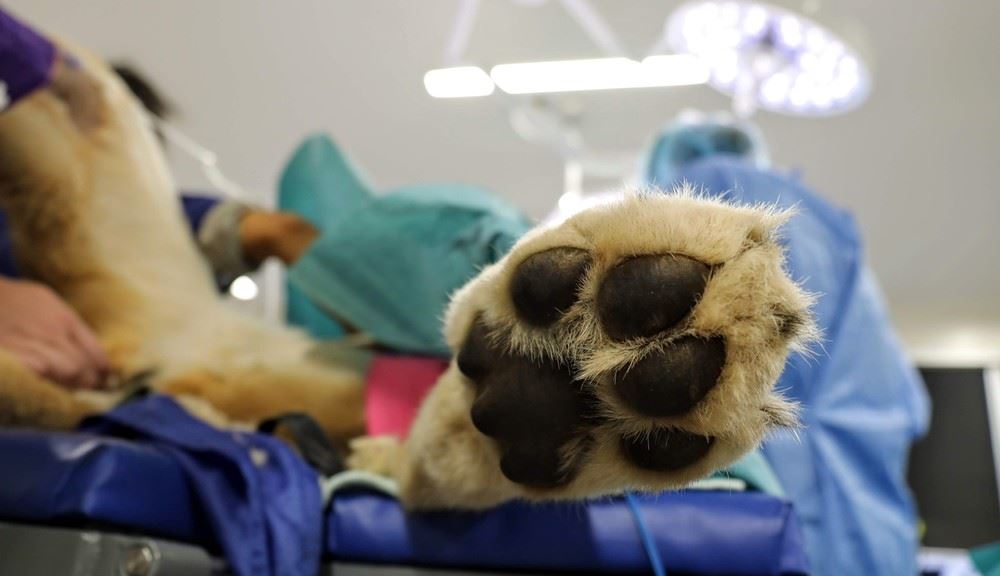Surgery success for one of Australia’s oldest Lions
One of Australia’s oldest Lions is well on the road to recovery after a remarkable surgery success at Werribee Open Range Zoo.
Late last month, expert veterinarians and specialist surgeons removed a Heamangiosarcoma tumour (malignant cancer) larger than a golf ball from 18-year-old Jarrah’s neck during delicate surgery.
The typically fatal cancer was detected as a large lump by zoo keepers in May, during one of Jarrah’s regular visual health checks.

Werribee Open Range Zoo Senior Veterinarian Bonnie McMeekin said that, while Jarrah’s behavior suggested she wasn’t suffering in any way, it was important that the growth was diagnosed as soon as possible.
“When we saw that it wasn’t going away of its own accord, we decided to give Jarrah an anesthetic and take a biopsy of the mass so we could find out what we were dealing with,” Dr McMeekin said.
Because of Jarrah’s training, the Lion could be given an injection by hand instead of being darted, significantly reducing any stress for her before the procedure.
Once veterinarians had confirmed the tumor was malignant, an ultrasound was undertaken during a second procedure to see if the cancer had spread.
Thankfully, they had detected it in time.
“We were able to check her abdomen with an ultrasound and confirm there were no other masses there,” Dr McMeekin said. “In fact, given her age we discovered she’s actually in fantastic health.”
However, the tumor still had be removed as it could potentially spread or cause her to suffer.
For this the Werribee Zoo team called in Dr. Stewart Ryan, a specialist surgeon from The University of Melbourne’s U-Vet Animal Hospital.
The team knew they were in for a surgery with an uncertain outcome because of the growth’s location.
“The tumor was very close to her trachea and her jugular vein,” Dr McMeekin said. “In fact, we could actually see her jugular vein when she was being operated on.
“Luckily, the mass wasn’t closely adhered to major blood vessels in the neck so, while we had to be careful, we were thankfully still able to remove it completely without complications. It was a big success and we don’t except it to regrow.”
The majestic female is now back on display in her exhibit, connecting with visitors and helping them learn about the plight of Lions in the wild, where they are under threat from poaching and habitat loss.
“Jarrah is an institution at Werribee Open Range Zoo,” Dr McMeekin said. “When you hear a Lion roar on site it’s very often Jarrah. So knowing that she is going to be roaring for some time to come is a really lovely feeling.”
Born at Melbourne Zoo in 2000, Jarrah moved to Werribee Open Range Zoo with her mother and aunt in 2004. The trio were Werribee Zoo’s first Lions and helped to educate visitors about wildlife conservation.
While Lions are top-order predators, hunting and habitat loss has seen wild populations of this feline drop to vulnerable status, with as few as 23,000 mature individuals left in sub-Saharan Africa.
It is estimated that in the wild, African Lions can live to around 18 to 20 years.
